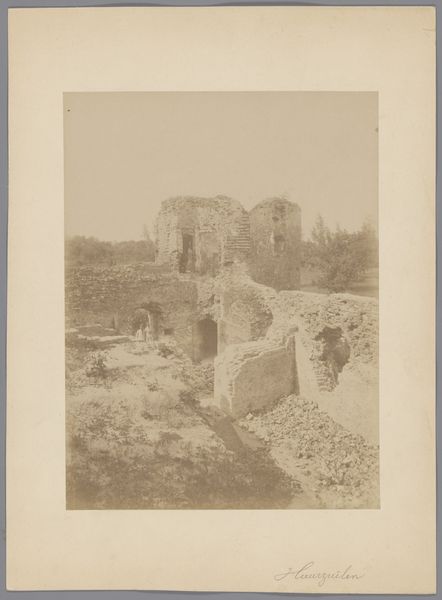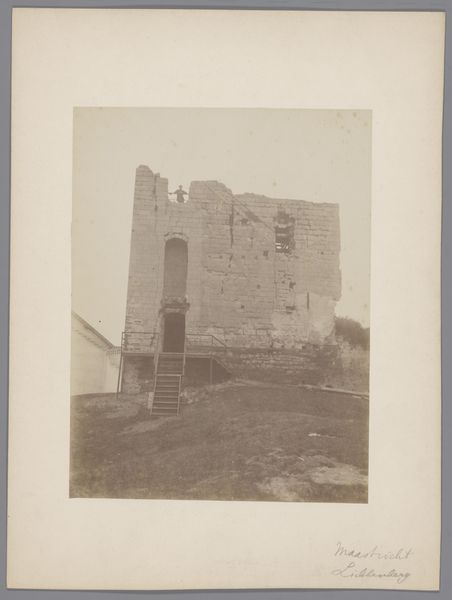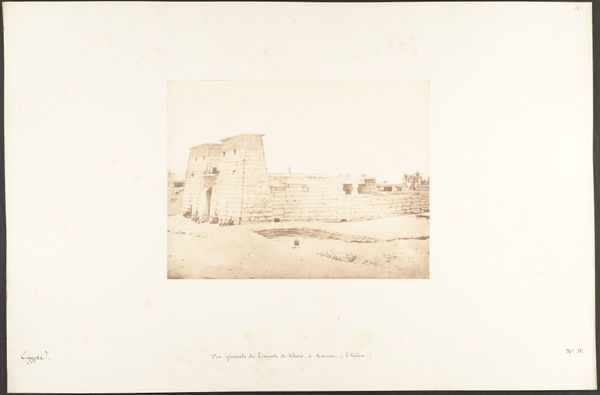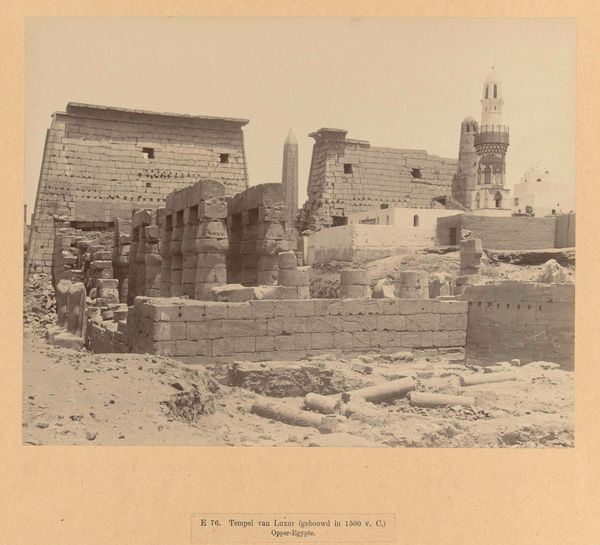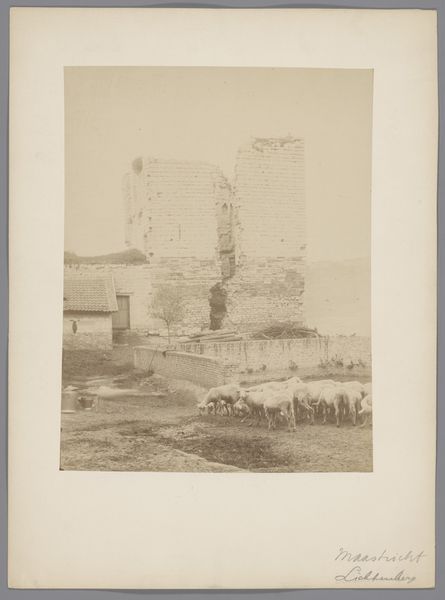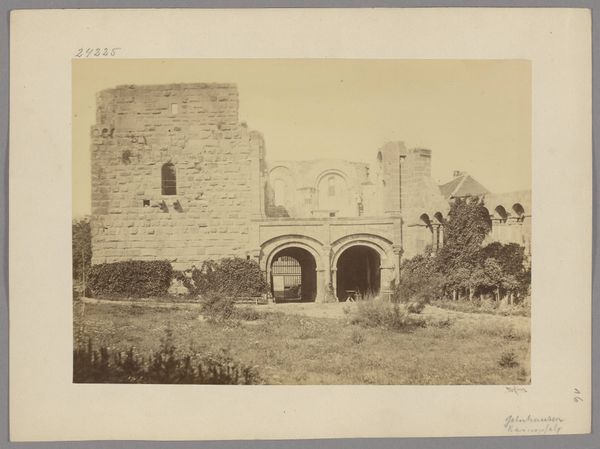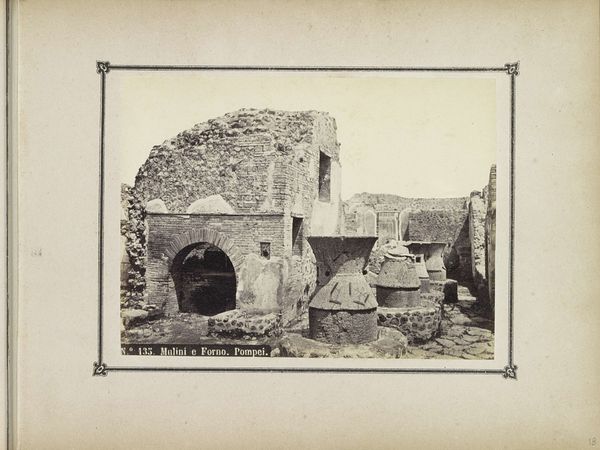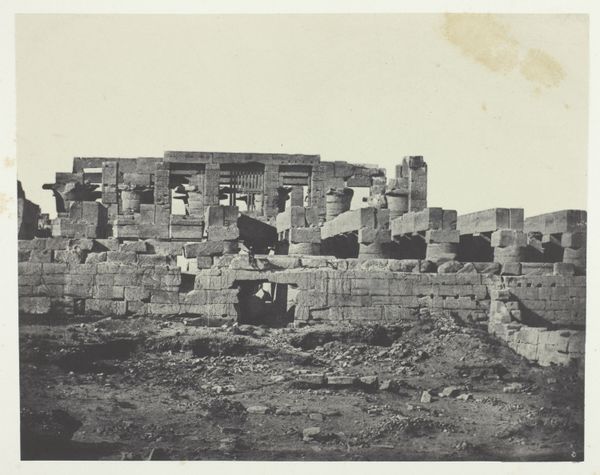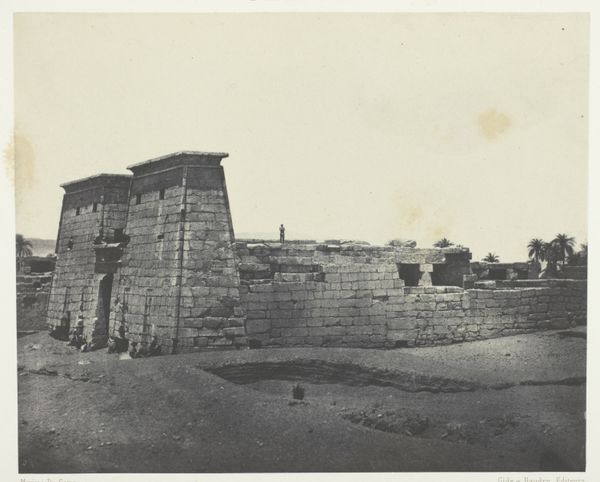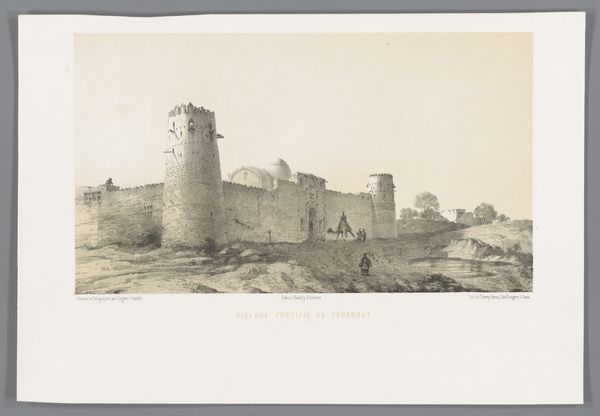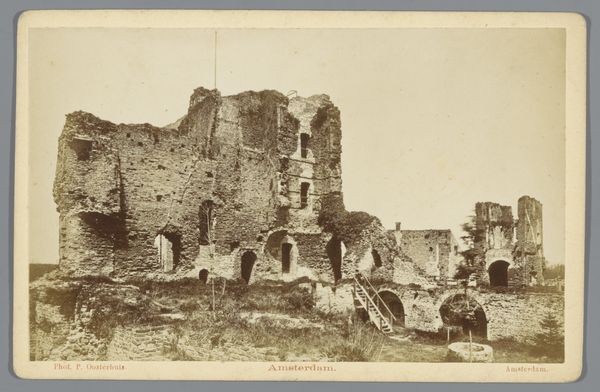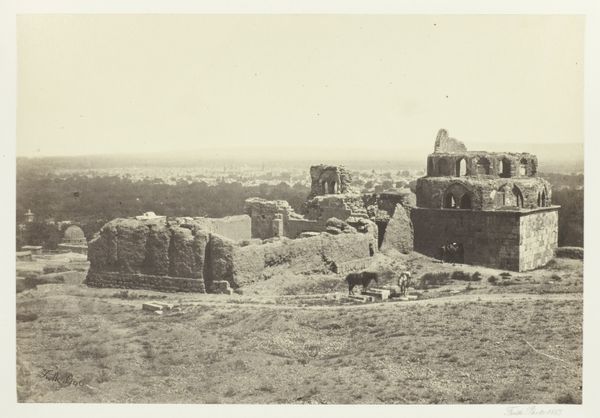
Stadsmuur van Damascus bij de Bab Kayssan, de latere Sint-Pauluskapel 1898
0:00
0:00
photography, gelatin-silver-print, architecture
#
landscape
#
photography
#
orientalism
#
gelatin-silver-print
#
architecture
#
realism
Dimensions: height 83 mm, width 108 mm
Copyright: Rijks Museum: Open Domain
Johannes Lodewijk Heldring made this photograph of the city wall of Damascus near the Bab Kayssan sometime between his birth in 1852 and death in 1923. Heldring’s image invites us to consider how a place can accrete layers of religious and institutional significance. The wall itself predates Christianity, but the chapel later built into it commemorates St. Paul's escape from the city. According to tradition, he was lowered in a basket from this spot. In the 19th century, European and American interest in the Holy Land intensified, fueled by religious and political motivations. Photography played a key role, documenting archaeological sites and reinforcing biblical narratives. Heldring, as a Dutch photographer, was part of this movement, capturing scenes that resonated with Western audiences. To fully appreciate this photograph, we can consult historical accounts, travelogues, and missionary records of the period. These resources shed light on the social and cultural context that shaped both the site itself and the photographer’s interpretation of it. The meaning of art is always contingent on social and institutional context.
Comments
No comments
Be the first to comment and join the conversation on the ultimate creative platform.
